When to trim your trees
Home / Trees & vegetation / When to trim your trees
If a tree, hedge, or shelter belt is not maintained as per the requirements and/or regulations, it can cause serious issues if it comes into contact with the electricity network.
It is your responsibility to make sure your trees and vegetation are clear of network assets.
If you are unsure, give us a call on 0800 30 90 80 and we can help.
Some work requires people or machinery to get closer than 4 metres from power lines. This requires a close approach consent from MainPower. Click here to find out more about close approach consents.
We’re here to help. Get in touch if you need help. Or, check out our FAQs.
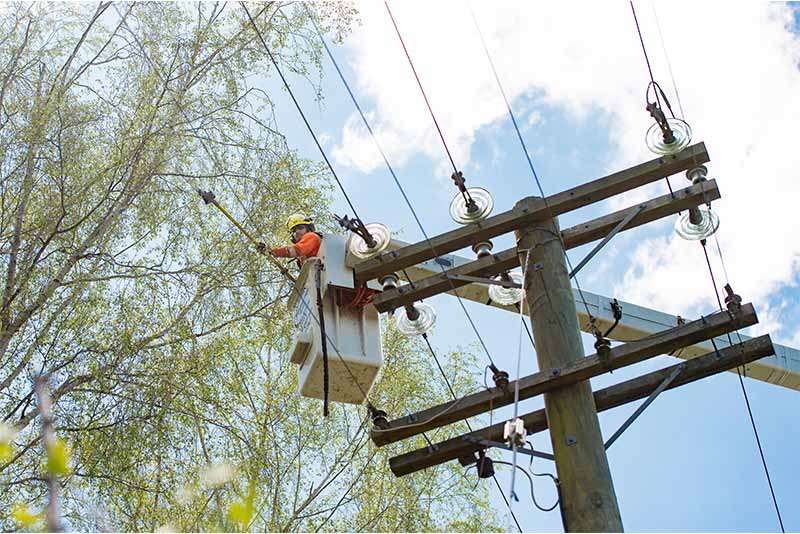
When to trim your trees
Please don’t wait to be reminded that your trees need to be cut.
It is a legal requirement (not set by MainPower) that you act in accordance with the Electricity (Hazards from Trees) Regulations 2003.
Be proactive. Regularly inspect your trees. If they are in any of the zones detailed below, they must be trimmed safely.
Call us on 0800 30 90 80 for a free inspection and a quote from our utility arborists.
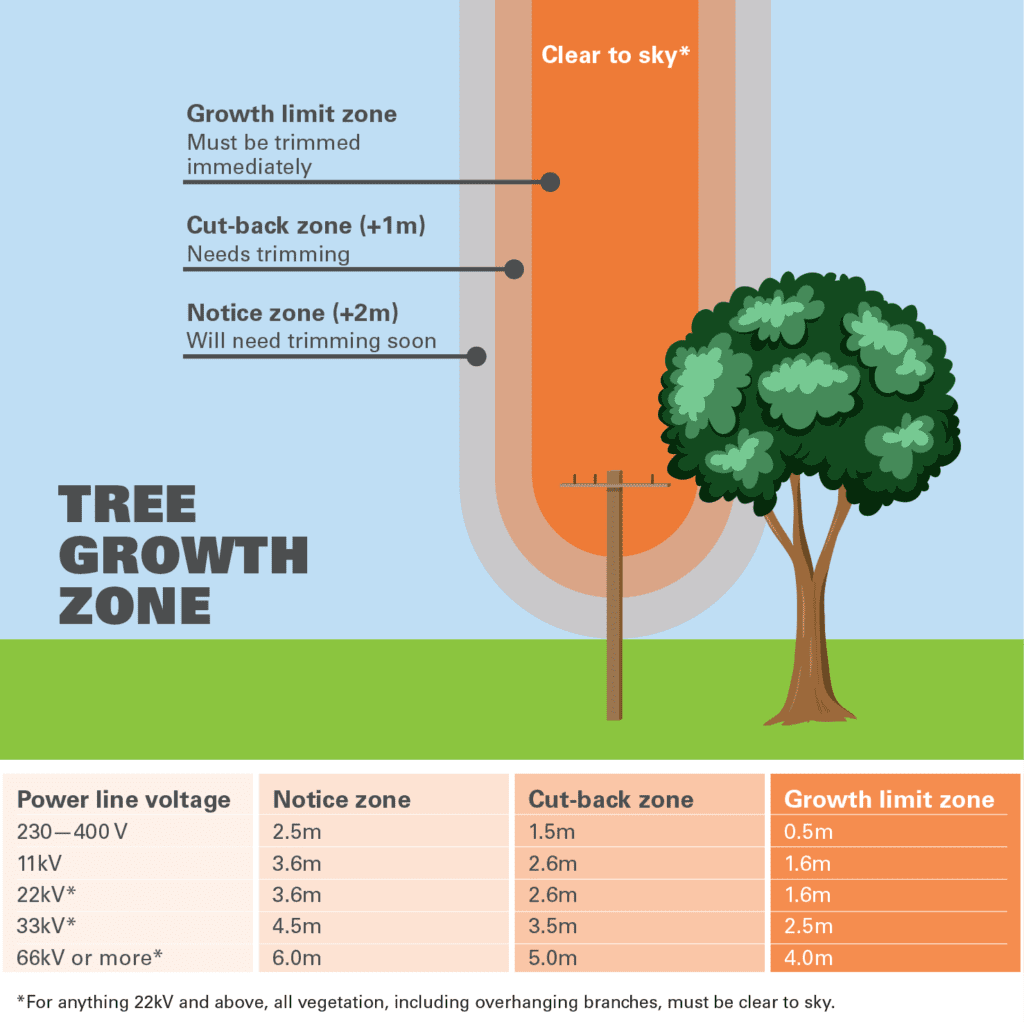
Tree growth zones
There are three zones for trees growing close to power lines and other electrical equipment: the Notice zone, the Cut-back zone, and the Growth limit zone.
“Clear to the sky” is a new requirement for all lines 22 kV or greater, plus certain high-risk lines at 11 kV. It was announced in October 2024, but it will not be enforced until 16 October 2026.
If your tree is growing within the Notice zone or the Cut-back zone, it must be trimmed soon because it is growing too close to power lines and equipment. If your tree continues to grow into the Growth limit zone you will receive a legal notice from us requiring the tree to be trimmed (by a qualified contractor) within a specified time frame.
Tree growth zones notes
- These distances are from the power line, not the power pole.
- These distances are a minimum and apply in all conditions, including high wind or snow.
- In most instances, the power lines that go to a house or building are low voltage power lines.
- Power lines that go down a street may be low or high voltage.
- The notice zones vary depending on the voltage of the power lines.
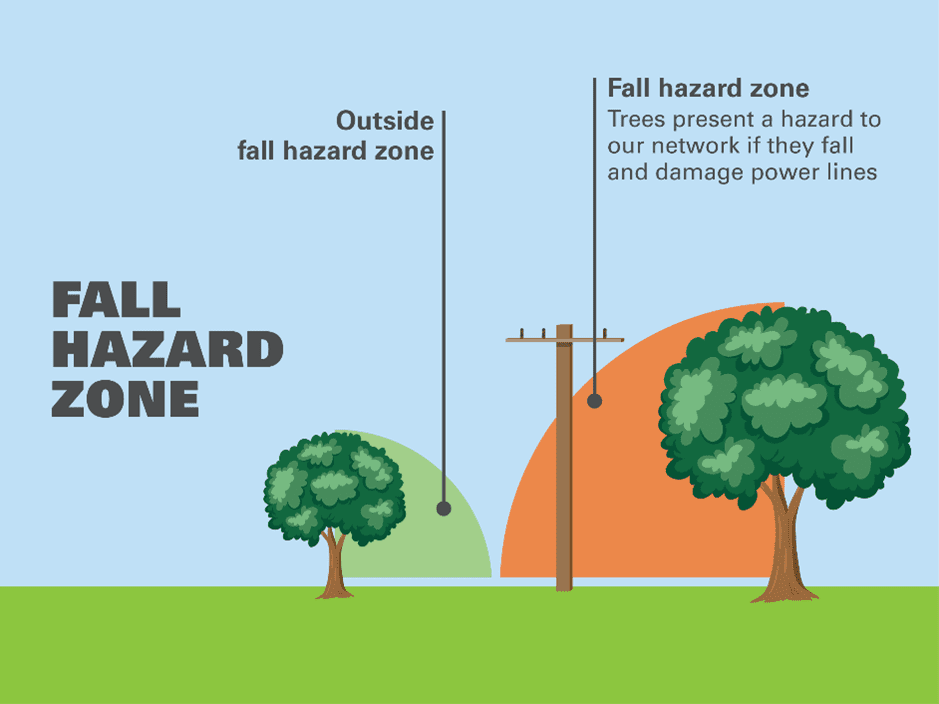
Fall hazard zone
This zone is where trees might present a hazard if they fall and damage power lines. The closest a tree can be located is calculated as the height of a tree plus 4 metres.
Don’t forget, before you plant any trees or hedges near power lines, plant those that have a slow growth rate, or dwarf species, otherwise you will be trimming on a regular basis, which is time consuming and costly.
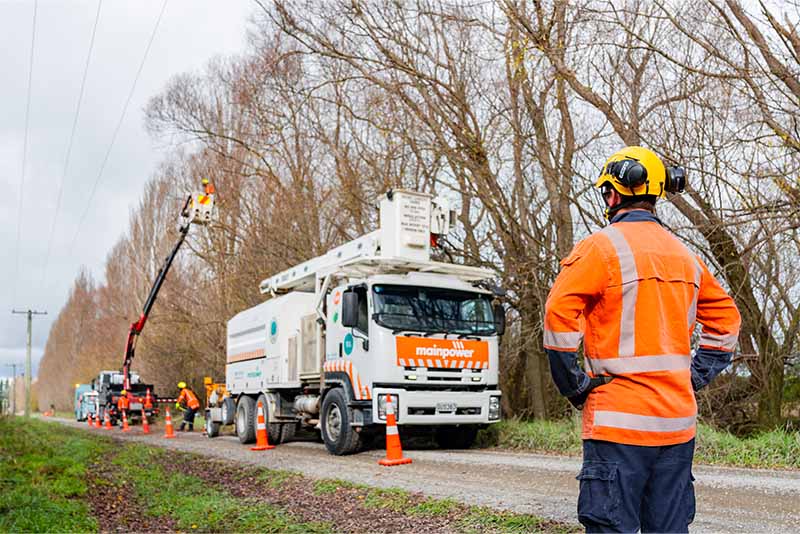
Cutting trees near live lines
Due to the risk of danger, cutting trees near live power lines is a very specialised job. MainPower has its own team of experienced and qualified utility arborists. Click here to find out more about MainPower’s tree services and book a free tree trimming inspection.
Some work requires people or machinery to get closer than 4 metres from power lines. This requires a close approach consent from MainPower. Click here to find out more about close approach consents.
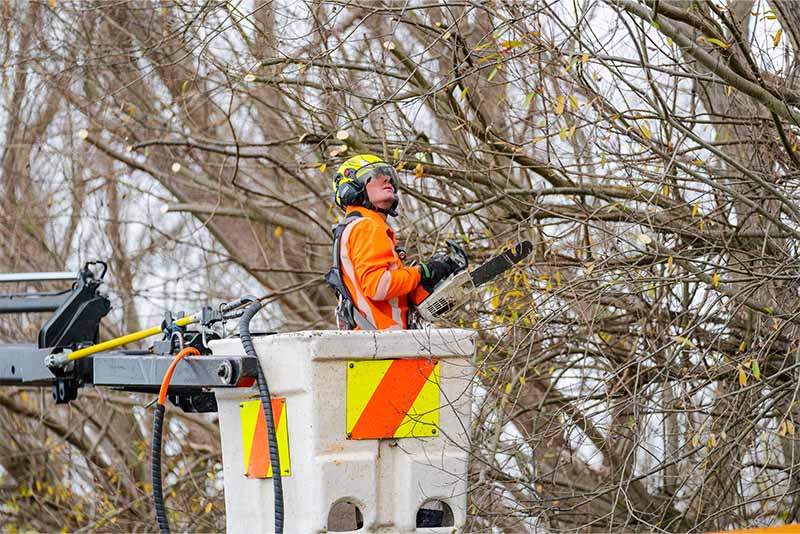
Resources
Here are some fact sheets and regulations you can download:
We’re here to help
If you need some assistance or advice, please get in touch with our team.